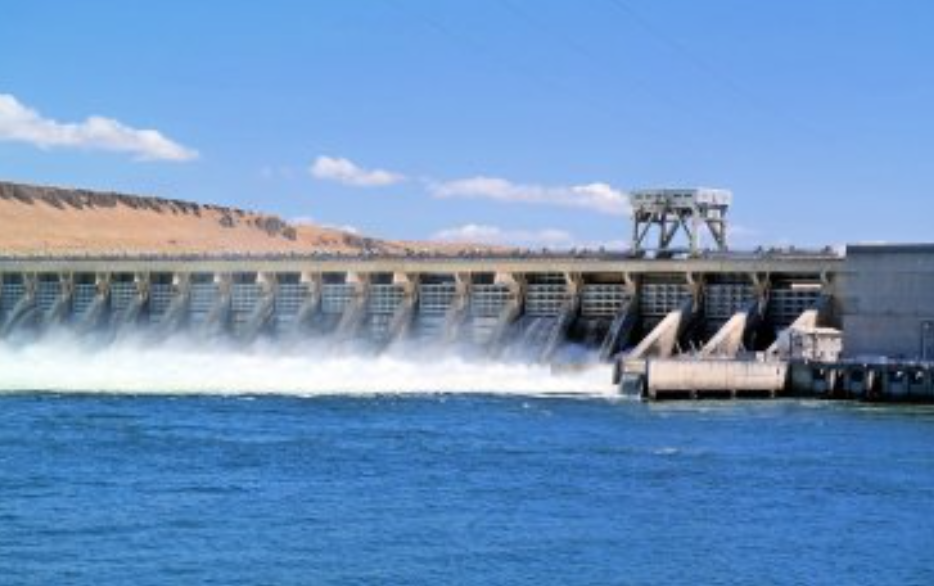Empowering Sustainability

While India is making strides in renewable energy, challenges such as high costs, greenwashing and the need for innovative solutions such as water credits reiterate the urgency for a more wholesome approach to address sustainability setbacks
Byline: Navneet Singh
The most recent sustainable development report from the United Nations Sustainable Development Solutions Network (UNSDSN) shows a troubling metric for India. The country ranks 109 with a score of 64.0 on the Sustainable Development Goals (SDGs). India is facing a climate crisis marked by disasters such as the Wayanad landslide, claiming 200 lives, and the Joshimath land subsidence, displacing many.
Extreme heat gripped the nation, with temperatures surpassing 50 degrees Celsius in some regions. Meanwhile, Delhi’s air quality plummeted, with the Air Quality Index (AQI) exceeding 500 due to local emissions and stubble burning.
A 2024 HeatWatch report revealed over 700 heat-related deaths this year and over $56 billion in damages from weather-related disasters in India between 2019 and 2023. Without urgent climate action, 45 million people could be displaced by 2050 due to slow-onset impacts, warned the Climate Action Network, South Asia.
To deal with the escalating climate crisis, the Paris Agreement seeks to limit warming to 1.5°C, requiring emissions to peak by 2025 and decrease by 43 per cent by 2030.
These pressing challenges highlight the urgent need for decisive action to combat climate change and safeguard vulnerable communities. They also demand a more collective and comprehensive approach for a sustainable future. The silver lining is that India is taking several steps to combat these issues.
India Tackling Challenges
India has a rich history of environmental activism, with movements like Chipko, the Rally for the Valley and Narmada Bachao capturing national attention. Despite this, the crisis escalated for several reasons, such as plastic pollution, e-waste, industrial emissions, climate change, desertification and non-renewable forms of electricity.
The water crisis has already resulted in a day-zero situation. “If we continue to extract water at the rate we are doing, we will have serious trouble over the next two decades, not too far away,” cautions Angelo George, Chief Executive Officer, Bisleri International.
Robust Initiatives
The government has undertaken several initiatives to promote renewable energy (RE), particularly solar and wind power. These measures encourage industries to shift from conventional coal-thermal energy sources to more sustainable options. As of 30 June 2024, the country boasts an installed solar photovoltaic (PV) capacity of 85.47 gigawatts (GW) and a wind power capacity of 46.65 GW.
India is the fourth largest nation globally in RE installed capacity, fourth in wind power and fifth in solar power, according to the International Renewable Energy Agency’s renewable capacity statistics 2023.
The government aims to install 500 GW of electric capacity from non-fossil sources by 2030. Key initiatives include allowing up to 100 per cent Foreign Direct Investment (FDI) under the automatic route and waiving Inter-state Transmission System (ISTS) charges for solar and wind power projects commissioned by mid-2025. The government has established a Renewable Purchase Obligation (RPO) trajectory through 2029-30, including specific targets for decentralised renewable energy to boost renewable energy consumption.
Additional measures encompass issuing standard bidding guidelines for competitive tariff-based procurement and various schemes like the Pradhan Mantri Kisan Urja Suraksha Evam Utthaan Mahabhiyan (PM-Kusum) and the National Green Hydrogen Mission. There are also ultra-mega renewable energy parks and expanding transmission infrastructure under the green energy corridor scheme.
New policies have been introduced to promote offshore wind energy, including a viability gap funding scheme for one GW projects and a strategic plan targeting 37 GW by 2030. The government has started initiatives such as the Green Term Ahead Market (GTAM) for trading renewable energy and rules to ensure timely payments to renewable energy generators. Collectively, these efforts underscore India’s commitment to a sustainable energy future.
“The target is not easy. India is adding around 18 GW a year. This needs to double to meet the 500 GW target,” comments Mani Khurana, the senior energy specialist at the World Bank. She points out the need for storage for the 500 GW, requiring a revisit of the pumped and battery storage. Pump storage takes longer to establish, and battery storage is more modular, but both are imperative.
India’s power demand is poised to grow significantly by 2070, with an increase in electricity consumption of about six to eight times cited by India’s National Electricity Plan (NEP). “When you look at the landscape, it is evident that substantial work is done. However, we have to look at the fossil fuel side as well. The coal production has gone up since last year, showing that business as usual is not a solution and we need more innovative approaches,” says Rinika Grover, Head of Sustainability and Corporate Social Responsibility, Apollo Tyres.
Waste Purification Tech
In a pivotal effort to address climate change, industries are increasingly adopting carbon capture and storage (CCS) technology to purify waste and mitigate greenhouse gas emissions. As the world grapples with rising temperatures and extreme weather events, the urgency for effective solutions has never been greater.
As of 2023, 43 large-scale CCS facilities are operating globally, potentially capturing around 50.39 million tonne of CO2 annually. This Global CCS Institute number will grow significantly as governments and industries commit to stricter emissions targets.
The International Energy Agency (IEA) report indicates that achieving net-zero emissions by 2050 will require massive deployment of CCS technology. Experts noted that CCS could help decarbonise hard-to-abate sectors where emissions are challenging to eliminate through conventional means.
“Public perception remains a barrier, and the economic viability of carbon capture needs to be more widely understood. In our hotels, we have proven that sustainability can go hand-in-hand with profitability by achieving zero-carbon status in 12 properties,” informs HC Vinayaka, VP of Technical, EHS and Sustainability at ITC Hotels.
The issue of integrity in climate action is aggravated due to the widespread practice of greenwashing, where firms and governments misleadingly promote their activities as climate-friendly.
Greenwashing Affecting Carbon Credits?
Many emissions reduction claims are unverifiable or dubious, with multinational corporations facing scrutiny for their practices. Additionally, developed nations often present their investments in developing countries as environmentally beneficial, highlighting supposed climate co-benefits with little justification.
A carbon credit, or offset, represents reducing or removing one metric tonne of CO2 from the atmosphere, allowing governments, industries, or individuals to compensate for their emissions. Rooted in the 1990’s ‘cap-and-trade’ model, the market now offers credits for various activities, from tree planting to energy efficiency upgrades.
However, many of these credits, often certified by unofficial third parties, have been criticised for lacking integrity and for the risk of double counting, raising concerns about the effectiveness of carbon markets and the potential for greenwashing.
Water credit operates similarly to carbon credits, but transactions must occur within the same hydrological unit, such as a river basin or watershed. They are a financing mechanism to promote collective action toward climate adaptation goals. Each water credit represents a specific volume of conserved or generated water, allowing transactions between water-deficit and water-surplus entities within a sub-basin.
India faces a looming water crisis, with the estimated annual water availability at 1,121 billion cubic meters (BCM). However, the Ministry of Water Resources projects that water demand will reach 1,093 BCM by 2025 and soar to 1,447 BCM by 2050.
EV Push To Help In Sustainability Goals
Under PM Modi, India has set an ambitious electric vehicle (EV) push that is gaining momentum and aligning with the country’s sustainability goals. Aiming to reduce carbon emissions and dependence on fossil fuels, the government targets 30 per cent of new vehicle sales to be electric by 2030. With incentives like the FAME-II scheme and state-level subsidies, EV adoption is rising.
As India moves forward to achieve net-zero emissions by 2070, its EV phenomenon will likely play an essential role in reducing greenhouse gas emissions and enhancing eco-friendly transportation. Experts said the shift to electric mobility is poised to transform India’s automotive landscape and support its sustainable development agenda.
“There will be rapid adoption with exponential growth for EV space. However, the challenge lies in adopting heavy transport, which will be sluggish. Even Europe is struggling on the front, and Bloomberg also forecasted that intermediate commercial vehicles will be around 25 per cent of new vehicle sales by 2030, while medium and heavy commercial vehicles will be around 5 per cent only,” comments Alok Verma, Head of Corporate Strategy and ESG at Ashok Leyland.
Educating Consumers
By 2050, the global population may reach 10 billion and with more people comes more demand – for food, fashion, travel, housing and related aspirations. It will not only create a burden on existing resources but also increase the human carbon footprint.
As per UNEP, in a world stretched thin for resources and under the threat of global biodiversity loss and climate change, our lifestyle decisions are putting the planet at risk. Humanity needs targeted action and sustainable living and lifestyle. Therefore, sustainable living and lifestyles for the first time appeared in the Sustainable Development Goals (4 Education and 12.8 Responsible Consumption).
This inevitable crisis needed action from all stakeholders. Businesses have a responsibility to educate consumers on sustainability through their products. In this context, adopting a ‘lifecycle approach’ in sustainability efforts is another area that merits attention.
The lifecycle approach involves assessing a product’s environmental impact throughout its entire lifecycle, from design and production to its use and disposal. This approach is also in favour of a circular economy, where the end-of-life phase feeds directly into a new life cycle, often through a value retention process like remanufacturing.
“This method helps companies identify critical areas (or hotspots) where they can implement meaningful changes to reduce the product’s overall environmental footprint. Moreover, it is not just about minimising impact during production but also considering how the product affects sustainability during its use phase,” advises Tejashree Joshi, Head – Environmental Sustainability, Godrej and Boyce.
This approach is a practical tool for continuous improvement, encouraging businesses to evolve their products to be more environmentally friendly over time.
The Long Road Ahead
As India faces a critical environmental crisis, its sustainability journey is marked by practical initiatives in renewable energy, carbon capture, and electric mobility. Effective implementation of these strategies and addressing issues like greenwashing and market integrity are crucial for meeting climate goals.
With a commitment to innovative solutions and public awareness, India can pave the way for a resilient and sustainable future, aligning with global efforts to combat climate change and protect vulnerable communities.


























































































































































































































































































































































































































































































































































































































































































































































































































































































































































































































































































